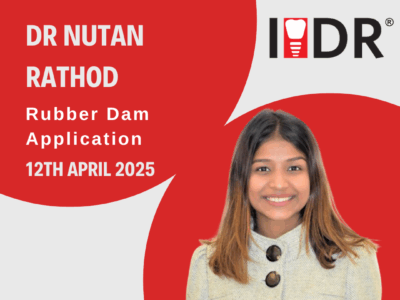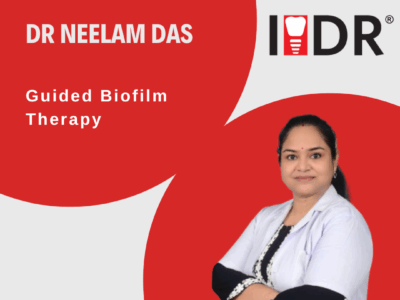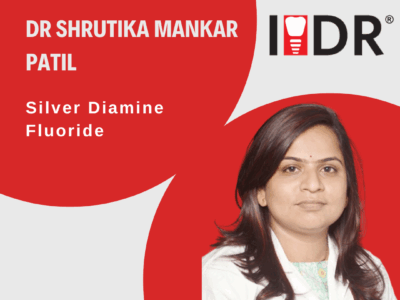Orthodontic treatment has evolved significantly over the years, with clear aligner therapy emerging as a revolutionary alternative to traditional braces. Popularized for their aesthetic appeal, comfort, and convenience, clear aligners have transformed the way dental professionals approach tooth movement. However, achieving successful outcomes requires a deep understanding of biomechanics, digital treatment planning, and patient compliance.
This is a comprehensive guide designed to demystify the alchemy of aligners, unearthing the science, technology, and clinical considerations behind effective treatment with clear aligners.
1. The Science of Clear Aligner Therapy
Unlike traditional braces that use brackets and wires to deliver constant pressure to the teeth, clear aligners rely on a sequence of individualized trays designed to push teeth into position one tray at a time. Gentle, controlled forces are applied on specific teeth so that, in time, the teeth are shifted into their ideal position.
Main Principles of Tooth Movement with Aligners
Sequential Movement: The movement of the teeth is incremental, with each aligner guiding them by 0.2 to 0.3 mm per stage.
Biomechanics of Force Application: The force application is through pressure points, flexion of the aligner, and attachments for the control of movement.
Biological Response: The periodontal ligament and alveolar bone will respond to the applied forces through remodeling, which allows for controlled tooth movement.
2. Digital Workflow in Aligner Therapy
Proper treatment by clear aligners begins with digital scanning, simulation, and 3D printing of custom aligners. A common process includes:
Step 1: Digital Impression and 3D Modeling
Intraoral scanners record an accurate digital model of the patient’s teeth, thus obviating traditional impressions
CBCT (Cone Beam Computed Tomography) is taken to determine the bone structure and root position.
Step 2: Virtual Treatment Planning
Advanced AI-driven orthodontic software maps out sequences of tooth movements, which the clinician then reviews and adjusts before fabricating the aligners.
Step 3: 3D Printing and Aligner Fabrication
Aligner trays are thermoformed using biocompatible materials for a snug fit and controlled force application.
3. Clinical Considerations for Aligner Success
Although aligners are a discreet and comfortable orthodontic solution, achieving the best results will require careful planning and execution.
A. Attachments: Improving Control Over Tooth Movement
Attachments (composite buttons) enhance the grip and facilitate movement of clear aligners. Various shapes and placements are helpful in the following:
Cylindrical teeth rotation, for example, premolars
Anterior extrusion-very challenging without attachments
Root control and adjustment of anchorage
B. Interproximal Reduction (IPR): Creating Space for Alignment
For mild to moderate crowding, IPR (Interproximal Reduction) is carried out to create 0.2-0.5 mm space between the teeth.
Avoid extreme proclination or expansion.
Enhance contact point relations.
C. Complex Cases Treatment
Aligners are good for mild to moderate malocclusion cases, yet some movements will require additional treatment:
Elastics – Correction of Class II, Class III, and crossbites are achieved with these.
Temporary Anchorage Devices (TADs) – These mini-screws help out in intrusion and distalization cases.
Hybrid Treatment Programs – Severe cases will best be treated through a combination of aligners and fixed appliances.
4. Compliance by the patient: A matter of success
Unlike fixed braces, the success of aligner therapy is significantly dependent on patient compliance.
Wear Time: Aligners need to be worn for 20-22 hours per day for predictable movement.
Changing Trays: The average time to change trays is between 7 to 14 days, depending on the treatment plan.
Proper Maintenance: Patients need to clean their aligners regularly and should avoid staining foods to maintain aesthetics.
5. Common Challenges and Solutions in Aligner Therapy
Challenge 1: Poor Aligner Tracking
Cause: Inadequate seating because of insufficient tooth movement.
Solution:
Use chewies to enhance seating.
Continue tray wear time if movement is slow.
Perform refinements with additional aligners if required.
Challenge 2: Difficult Extrusions and Rotations
Cause: Inadequate force delivery by aligners.
Solution:
Use attachments to enhance retention.
Utilize engagers or elastics for vertical movements of the teeth.
Challenge 3: Midline Discrepancy
Cause: Asymmetric tooth movements or skeletal discrepancies.
Solution:
Do interarch elastics therapy.
Consider IPR on one side to help facilitate correction.
6. The Future of Clear Aligner Therapy
AI, digital orthodontics, and material science keep advancing the technology of clear aligners. Trends in the near future are:
AI-driven predictions for better treatment accuracy.
Smart materials self-adjusting aligners.
Accelerated treatment protocols, which will involve vibration therapy and photobiomodulation.
Aligner therapy is an art, science, and technology all rolled into one. Precise diagnosis, careful planning, and patient cooperation are essential for the success of aligner therapy. Understanding biomechanics, digital workflow, and troubleshooting strategies can unlock the full potential of clear aligners to achieve predictable, stable, and esthetic outcomes.
With continuous innovations and evolving treatment protocols, the future of orthodontics is increasingly being shifted to digitally guided, patient-friendly solutions. It makes clear aligners part of modern dental practice.
Course Features
- Lecture 1
- Quiz 1
- Duration 60 minutes
- Skill level All levels
- Language English
- Students 210
- Certificate Yes
- Assessments Yes
Curriculum
- 2 Sections
- 1 Lesson
- 60 Minutes
Requirements
- BDS MDS
Features
- braces, orthodontics, orthodontists, misaligned teeth, aligners
Target audiences
- all dental practitioners






